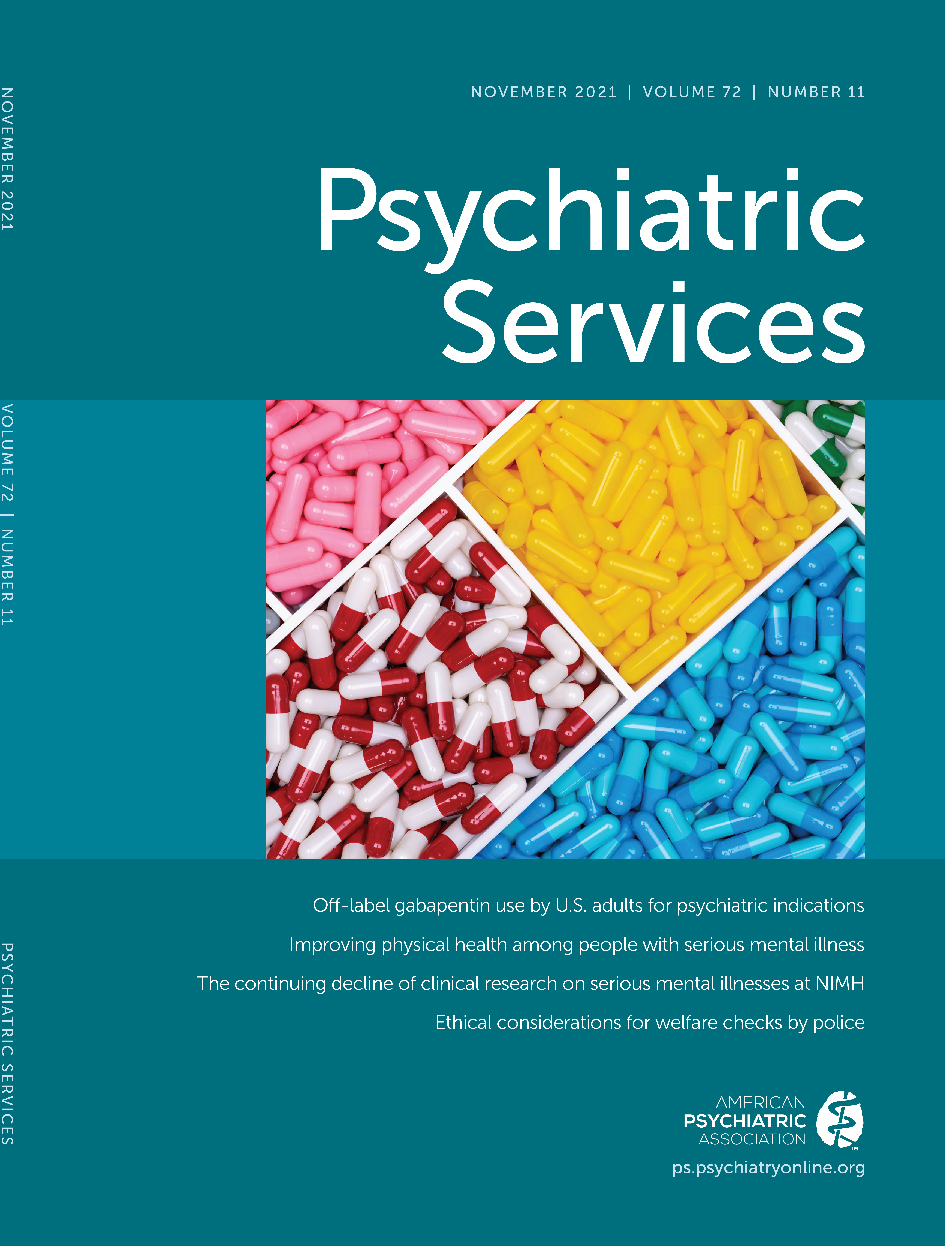Intentional Overdose Prevention in the Era of the 90-Day Prescription
TO THE EDITOR: I am writing in regard to the Open Forum by Barnett and colleagues (1). While reducing access to lethal means is a critical component of suicide prevention, the risk of harm from dispensing 90-day supplies of prescription psychotropic medications may have been overstated. Imposing regulatory restrictions on dispensing 90-day supplies is premature in the absence of compelling evidence.
With acknowledgment that many intentional drug overdoses are impulsive, considering limiting access to lethal means by way of reducing the quantity of medication supplied seems reasonable. However, there are limits to what restrictions are reasonable; after all, the most conservative approach would be to avoid pharmacotherapy entirely for patients with suicidal ideation, and upwards of 70% of the 35 million U.S. adults with a lifetime history of at least one major depressive episode have experienced thoughts or plans of suicide (2). Although having access to less medication may be safer than having access to more medication, how much, exactly, is reasonable? Extrapolations of relative lethality on the basis of strength and quantity may not account for enhanced lethality due to drug-drug interactions and other toxicokinetic considerations. The equation is further complicated by the risk of suicide due to untreated mental illness in the event of nonadherence. As the authors acknowledge, evidence suggests that 90-day supplies of medications increase medication adherence. One study found that adherence to selective-serotonin reuptake inhibitor therapy was 18% higher with 90-day supplies versus 30-day supplies, accounting for an additional 56 days of persistent therapy (3).
I agree with the authors’ contention that studies are needed to understand the role of 90-day prescriptions in intentional overdoses but would advise reserving judgment on the relationship until such investigations are performed. The authors cite Corcoran and colleagues (4) for their claim that “the number of tablets contained in a medication’s packaging is positively associated with medication quantities consumed in overdose attempts”, who in turn cite a study on paracetamol (acetaminophen) package sizes in the United Kingdom (5). In that study, the authors noted that the mean number of packages used in an intentional overdose was greater in Ireland than in England, but this did not correspond to a difference in the number of pills taken in overdose (5). The data concerning overdose with over-the-counter medications such as acetaminophen does not appear conclusive, and extrapolation to prescription psychotropics may be premature.
Instead of imposing regulations, bringing attention to risk stratification may be more helpful. For patients with a history of intentional overdoses, consideration should be given to prescribing psychotropics that are less dangerous in overdose or to choosing alternatives to pharmacotherapy in select cases. Because community pharmacists (and providers other than psychiatrists) may be less familiar with suicide prevention screening tools or interventions, I agree with the authors’ suggestion to incorporate suicide prevention strategies in continuing education programming in the long term. Communicating suicide risk assessments to other health care professionals may be helpful in the short term.
1. : Intentional Overdose Prevention in the Era of the 90-Day Prescription Psychiatric Services In Advance, 2021., 10.1176/appi.ps.202100050Google Scholar
2.
3. : Medication days’ supply, adherence, wastage, and cost among chronic patients in Medicaid. Medicare Medicaid Res Rev 2012; 2:mmrr.002.03.a04Crossref, Medline, Google Scholar
4. : Psychotropic medication involved in intentional drug overdose: implications for treatment. Neuropsychiatry (London) 2013; 3:285–293Crossref, Google Scholar
5. : Impact of different pack sizes of paracetamol in the United Kingdom and Ireland on intentional overdoses: a comparative study. BMC Public Health 2011; 11:460Crossref, Medline, Google Scholar



